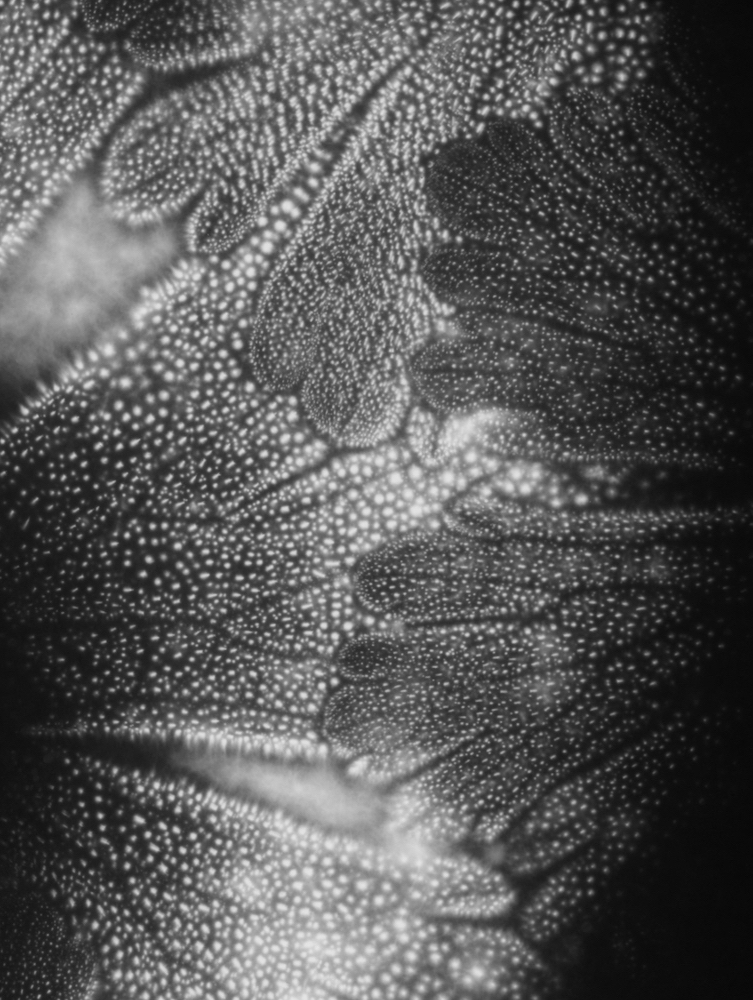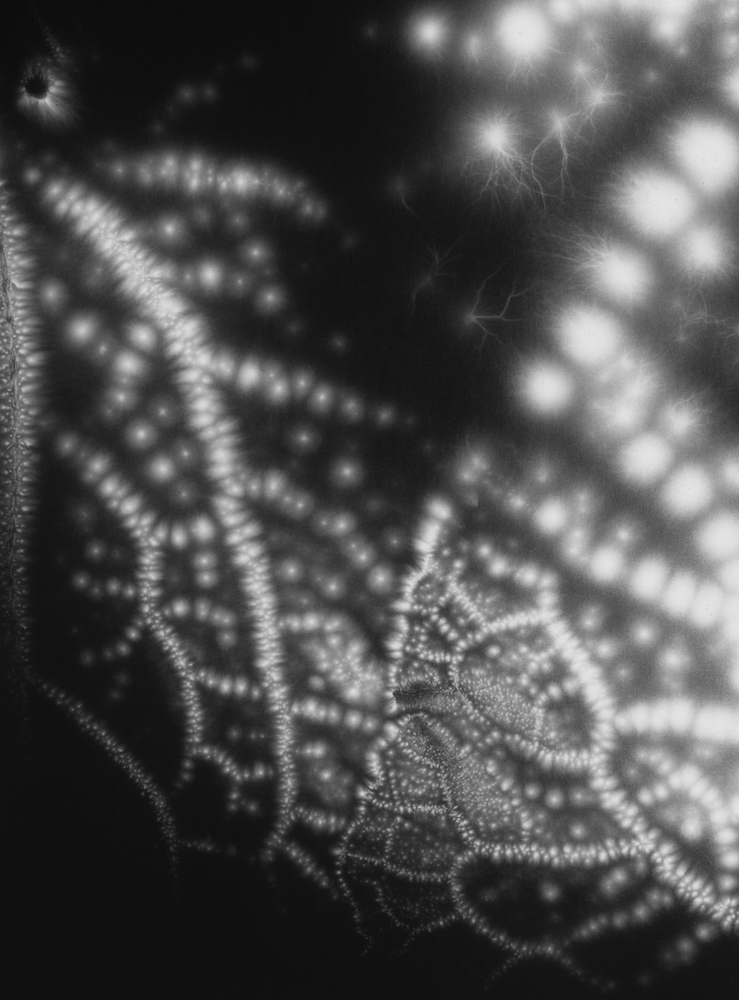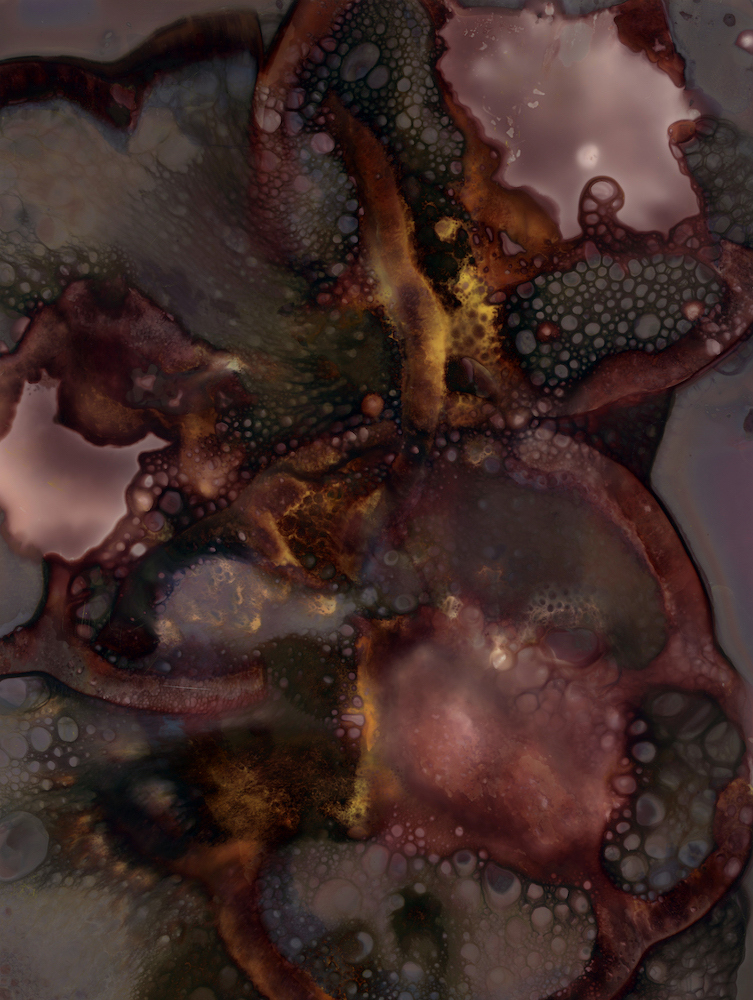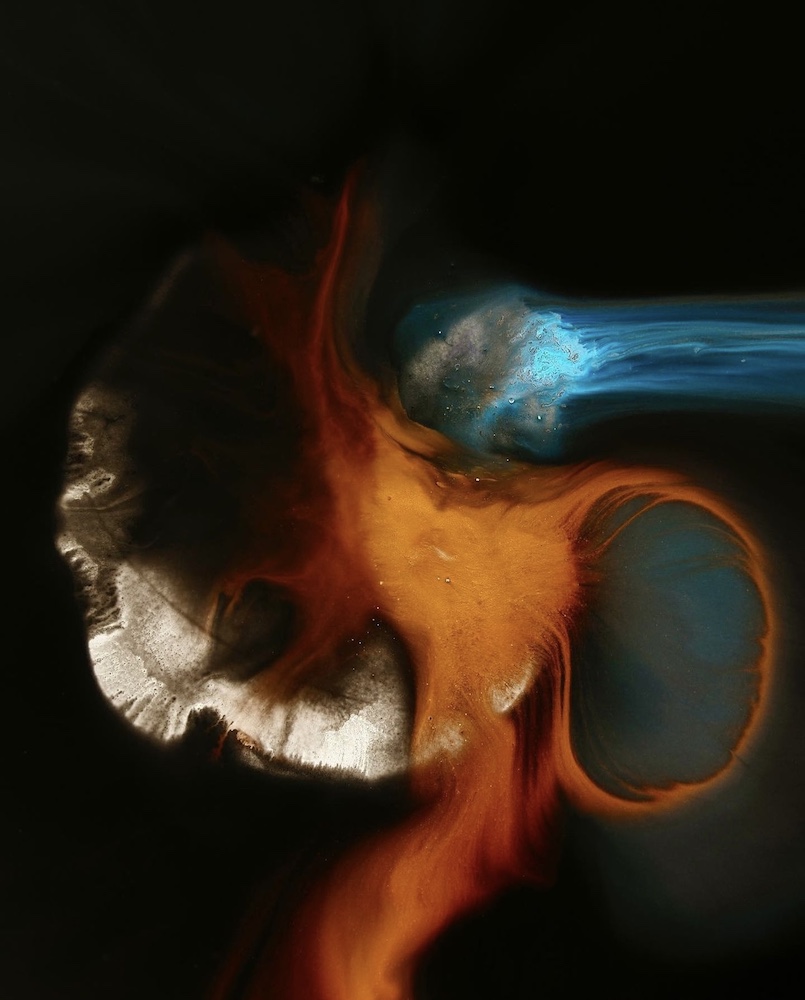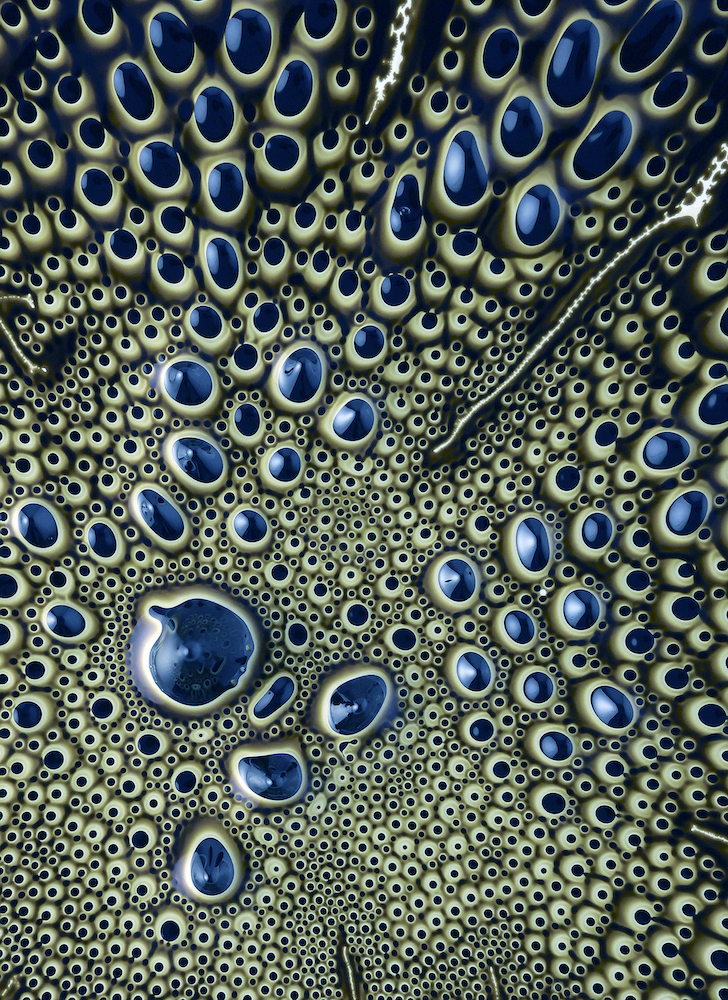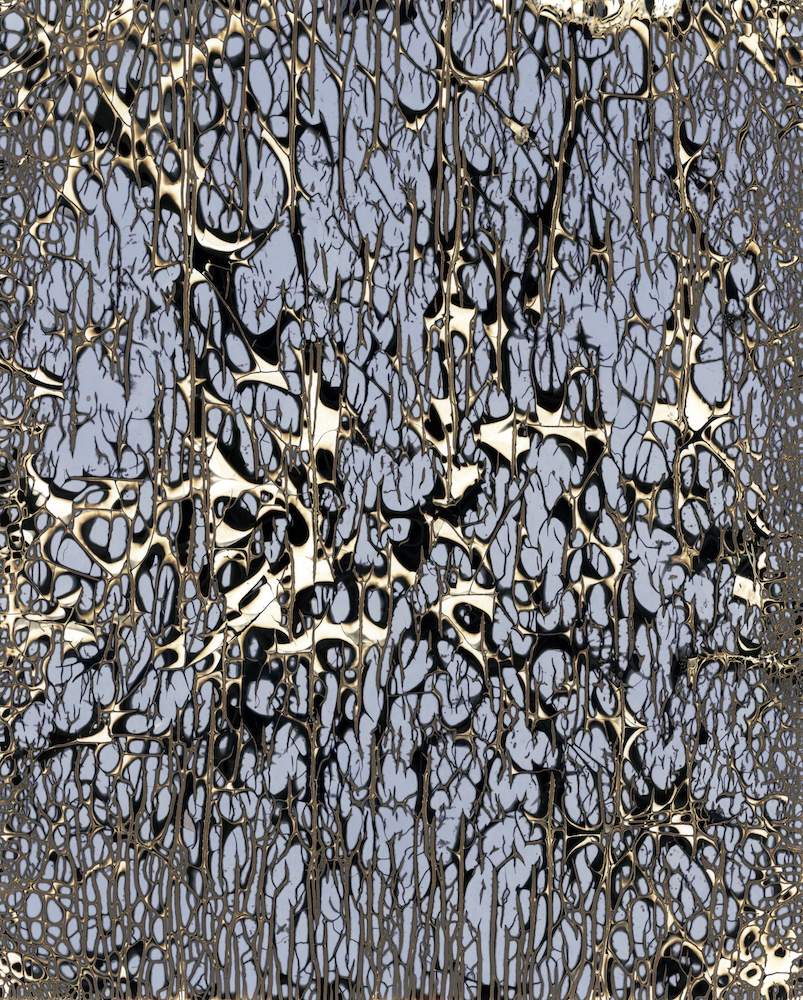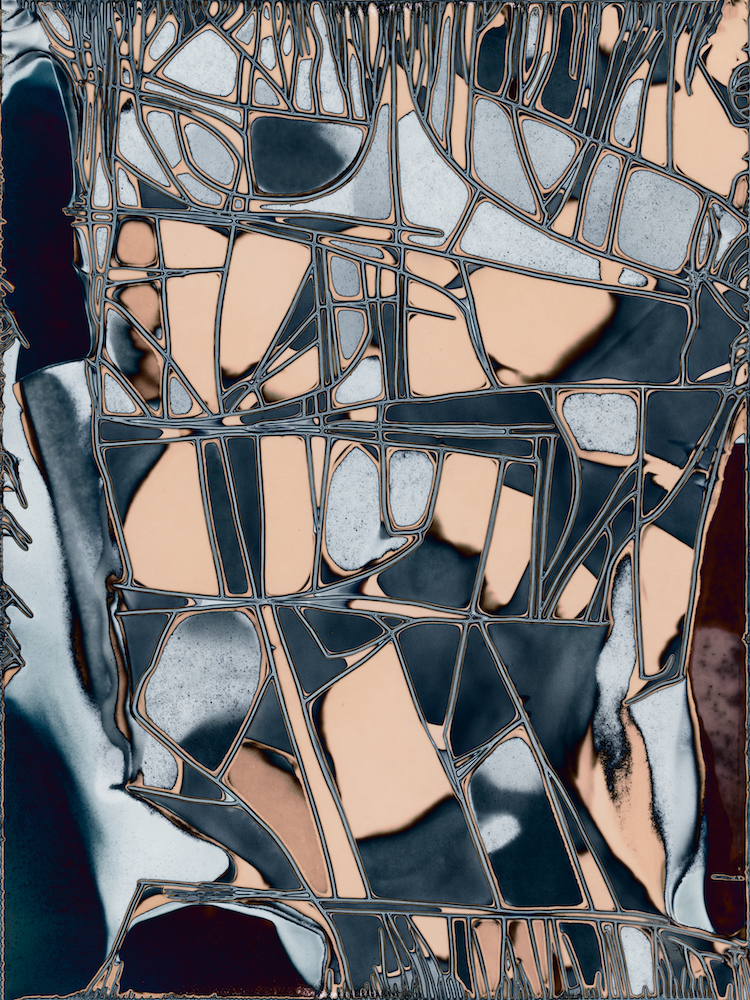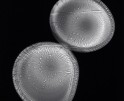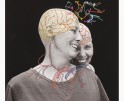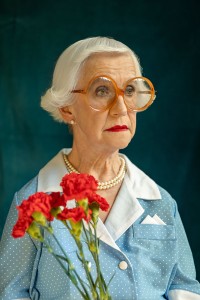Paula Pink: Interconnectivity
I met Paula Pink, virtually, during an online workshop in 2021 led by Andrew Hall, hosted by The School of Light. The work she presented in class often wowed me. It is not surprising since her knowledge of analog photography and darkroom work dates back to childhood when
she enjoyed learning from a photography teacher in her school in Edinburgh. She described the experience as “pure alchemy.”
In college, Paula went on to study graphic design and advertising and made a career working for several London-based design companies from 1987-2000. Although she enjoyed the connection and collaboration with other artists, the commercial work became increasingly profit-driven.
Margins were squeezed and creativity was sidelined.
By 2000, married with three children, Paula stepped away from full-time employment to spend more time with her family and returned to analog photography, making portraits of the children she was surrounded by in daily life. In 2002, she relocated with her family to Charlotte, NC, where she opened a small studio for portraits and was commissioned for fashion shoots. She then took another break from photography and in
2010, moved with her family to New York. There, she earned a degree from The New School and volunteered in visitor experience at the Metropolitan Museum of Art. During that time, Paula enjoyed seeing exhibitions, theater, and music.
Then in 2019, everything changed. Covid-19 made its first appearance and began to interrupt life and routines. The family returned to Charlotte where new opportunities for creativity awaited Paula. There, she had a beautiful garden which reawakened her relationship with nature. Zoom helped her connect to the wider international world and new online classes. It was the beginning of a new chapter in her life. She enrolled in a Lumen printing class with The School of Light and her love for cameraless photography was born.
Paula Pink is an experimental photographer living and working in Charlotte, North Carolina, originally from Edinburgh, Scotland. Her work has appeared in exhibitions both nationally and internationally and is held in several private collections.
Follow Paula on Instagram: @paulapinkphotography
Most recently, I have been experimenting with both analog and digital photographic mediums, in and out of the darkroom. I am particularly fascinated by patterns in nature, organic forms, and the interconnectivity between all living things; my images explore the unforeseen or hidden details that are all around us. My work invites viewers to contemplate the wonders of nature and its fragile yet essential place in our lives
KB: Paula, some of your photographs are printed in the darkroom while others are created there. In our conversations leading up to this interview, you spoke of “beauty in the darkness.” Would you share what this means to you? Also, when you work in darkness, is each image a surprise, or can you sense or imagine what you are creating?
PP: Darkness is the absence of light – a fundamental aspect of the natural world. But I also see it as a metaphor for the unknown, the mysterious, the sublime; a sort of traveling between the visible, tangible aspects of reality and the invisible, intangible realms that lie beyond our immediate perception. As we travel between these dimensions, we begin to understand the interconnectedness of all things. Finding beauty in this journey means appreciating the intricate web of relationships that bring the seen and unseen together, recognizing that each contributes to
the richness and complexity of the whole.
Because of the experimental and exploratory nature of cameraless photography, the outcome of each image I create in the darkroom always has an element of chance and surprise. There are no rules, and although I can control certain factors, such as composition, exposure, intensity of light, etc., there are other dimensions to the images that manifest during the creative process beyond my control – phenomena such as chemical reactions with paper, the internal structure of an object, or charged particles that only become visible once the image is developed – invisible
forces that co-create and contribute to unique and unpredictable results.
KB: Your first camera was a Yashica. How does the experience of using that camera compare to cameraless experimental work? What do you love about both ways of making photographs?
PP: I still photograph with my Yashica, and to this day I love the clunk it makes when I capture something that piques my interest. Unlike using a digital camera or an iPhone, I feel more connected to the images I make (selecting and loading the film, adjusting settings, developing negatives, and printing images). There is an ability to control the outcome each step of the way. However, unlike traditional photography, where the photographer is physically distanced from the subject, experimental photography allows me to actively engage in the materiality of both
subject and surface. The process involves a certain relinquishing of control, often resulting in spontaneous and unpredictable results that are exciting and refreshingly new.
KB: During the pandemic, your work shifted from representational photographs to more abstract forms. Your work is both of this world and otherworldly. Please comment on these shifts and themes.
PP: During the pandemic I began experimenting with household liquids, pigments, inks, and other fluids, furthering the exploration of silver gelatin b&w paper as canvas and exploring the dynamic interplay between organic forms, liquid, and light. Making photographs (as opposed to
taking photographs) has opened a whole new world for me, pushing what I know about photography into a new direction, changing my perception of the medium from one of representation/objectivity to creating images that are more abstract, gestural, and subjective. In turn, this leads to new ways of seeing, challenging conventional stereotypes and inviting the viewer to experience the work on a more visceral and emotional level.
I am fascinated by the rhythms and shapes found in the natural world: the venation patterns in a leaf; ripples in a pond; crystalline structures found in ice and salts, and how these can be created or captured onto photographic emulsion. Influenced by invisible forces, forms become highly reminiscent of the often chaotic structures in life or mimic the inherent geometric structures and growth patterns in natural landscapes. Through graphic abstraction rather than symbol, the viewer is invited to journey into the work and connect in a different realm rather than remain as an outside observer; to enter into a dialogue that attempts to question ….etc
KB: Would you talk about toxicity (as it relates to chemistry used in these processes and as it relates to the earth) and ephemerality in your work?
PP: When toxicity and ephemerality intersect, they can create a poignant narrative about the interconnectedness of human activity, environmental degradation, and the vulnerability of Earth’s ecosystems. The images I create that juxtapose scenes of beauty with signs of pollution, decay, or destruction aim to serve as visual metaphors for the consequence of toxic contamination on the ephemerality of life on Earth. In turn, this invites viewers to reflect on their own relationship with the natural world and take action to protect it for future generations. There
is, of course, irony in creating these images, since some of them use toxic darkroom chemicals which are harmful to our environment. This process has made me more conscious and aware of the need to source environmentally friendly alternatives. The Sustainable Darkroom, and
British-based photographic artists like Edd Carr, Hannah Fletcher, and Melanie King are leading the way in creating an ecological future for photography, such as developing low-toxic chemistries and reclaiming silver from fixer to make jewelry.
All fascinating and thought-provoking work; certainly, we have a long way to go.
KB: Paula, when we were workshop participants via Zoom at The School of Light, I remember looking forward to the presentation of your work. I knew something amazing was about to appear on the screen of my laptop. I have enjoyed seeing your new experiments and explorations on Instagram. I look at Ferro Cells and it appears 3D. I study Hidden Worlds and see nature in a cage. I find peace in Traces. Diversity in process and form is central to your work. What is next on the horizon?
“I like to find
what’s not found
at once, but lies
within something of another nature,
in repose, distinct” …
PP: I recently came across this poem called Pleasures by English poet Denise Levertov, and her words describe themes similar to those I explore through my own work. I love that the poem references ideas about finding things that are not immediately visible but are concealed within
something else, unique and separate but connected – the idea of discovery, beauty, and exploration. As you mentioned at the beginning, after 10 years of apartment living, I love having a garden and a reference to nature. Zoom has helped me connect with the wider alternative process community through online classes, and I have enjoyed taking workshops in person with incredible teachers like Elizabeth Opalenik, Tricia Rosenkilde, Brittonie Fletcher, and of course Andrew Hall / The School of Light where you and I connected. I have been exploring new ways to edition and print my work and hope to find more opportunities to exhibit throughout the year. I want to explore and learn everything, and I have barely scratched the surface of this medium. It is an exciting time for sure.
Karen Bullock is a photographer living in Alabama. She is known for her documentary-style images of the American South, with a focus on expressions of faith, considerations of home, and the enduring spirit of nature. Her practice uses vivid color and light to explore the unheard voice, via gesture, sense of place, and mood. During a three-month cross-country road trip with her husband and their two dogs in 2023, Karen began a new project and is working to complete it.
Follow Karen on Instagram: @karenbpix/
Posts on Lenscratch may not be reproduced without the permission of the Lenscratch staff and the photographer.
Recommended
-
Paula Pink: InterconnectivityMay 17th, 2024
-
Pinky/MM Bass: Threads of (dis)IntegrationMay 13th, 2024
-
Luther Price: New Utopia and Light Fracture Presented by VSW PressApril 7th, 2024
-
Artists of Türkiye: Sirkhane DarkroomMarch 26th, 2024
-
European Week: Sayuri IchidaMarch 8th, 2024


